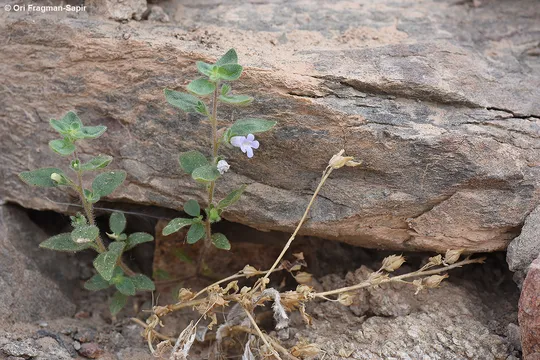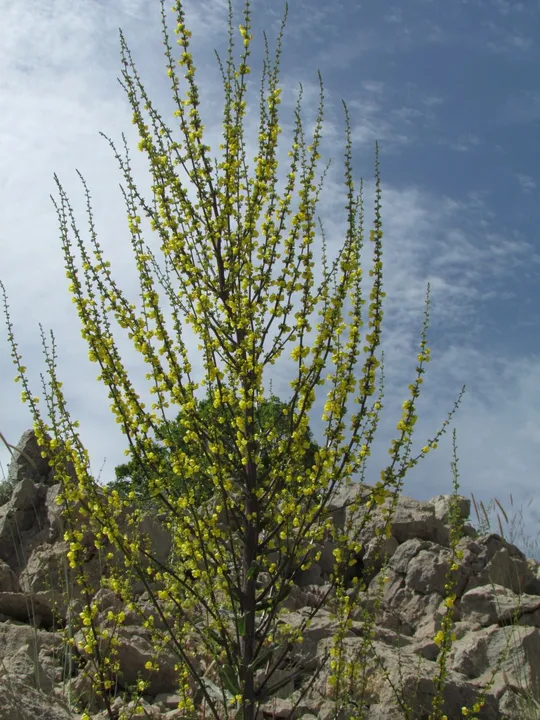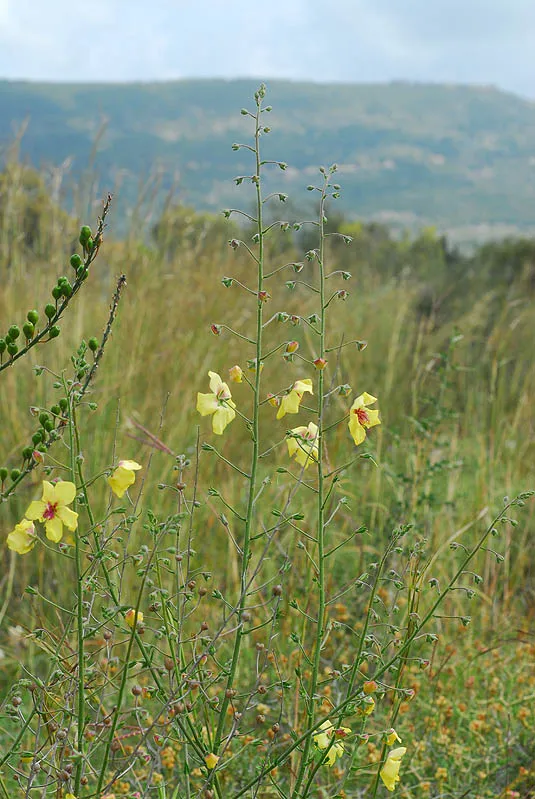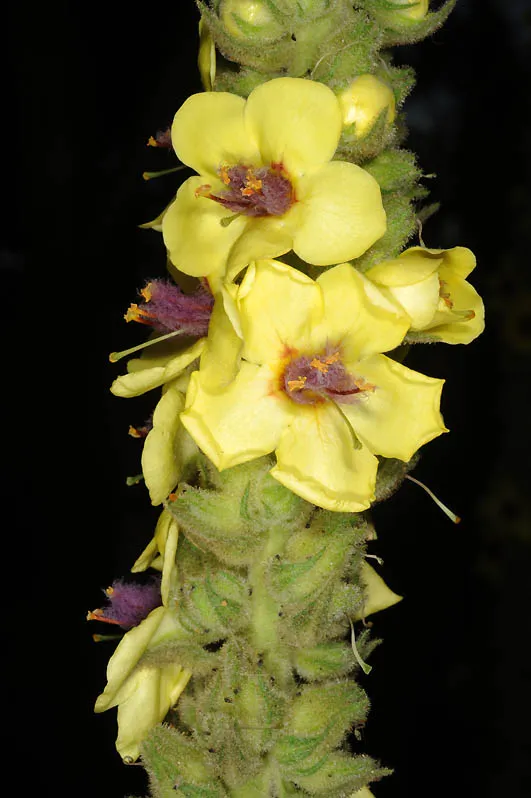Lindenbergia sinaica
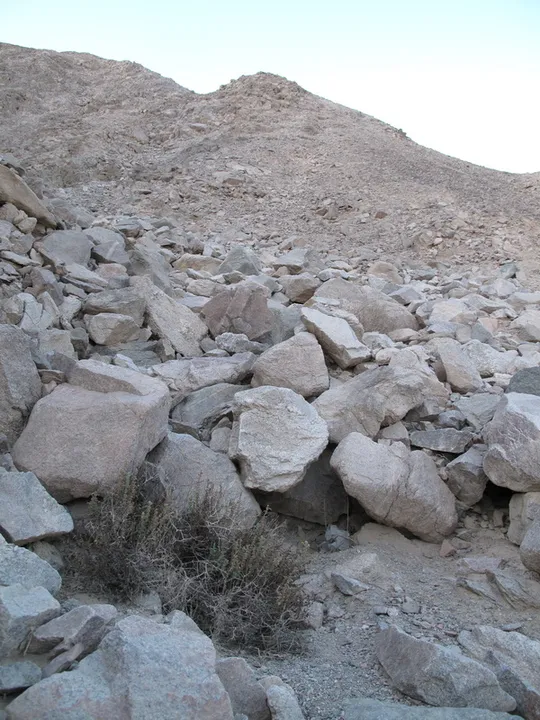
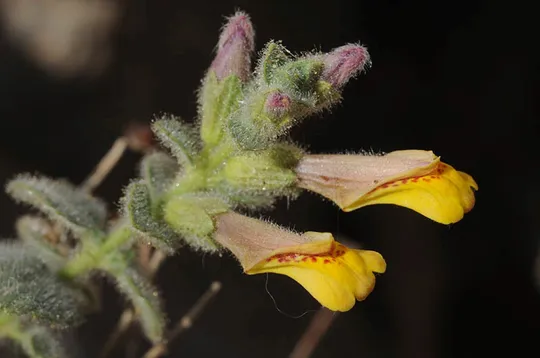
Lindenbergia sinaica is found only in a single site in Israel in the Elat region, between Eilat and the Princess Hotel, on the southern slopes of Mount Tsfahot at an altitude of 20 meters. The plant appeared in old guides based on herbarium sample collected by Zohary in 1949 from “Ras a-Naqeb” (now on the Egyptian side of the border). Danin found the site at the edge of Mount Tsfahot site in 1966 for the first time, and since then there have been repeated observations from there. In 1998, 20 plants were counted in a 300 square meter area. Despite all efforts (especially by Dudi Rivner from Elat) no additional sites were found in the Elat region.
The plant was found in the Tsafi oasis south of the Dead Sea in 1893 by the botanist officer Hart (Hart 1893).
A number of sites in which L. sinaica grows are known in the Elat area, east of the Egyptian border: near Taba, at Wadi Gishron and south of Ras a-Naqeb.
Warm rocky slopes in extreme desert wadis, on igneous rocks. Also in flow channels of hot wadis on arkosic igneous substrates.
The genus Lindenbergia includes 15 species growing in the tropics of Africa and Asia. Most of them are herbaceous perennial dwarf shrubs, characteristic of arid savannas. Wood (1997) combined Lindenbergia sinaica with L. indica in the Flora of Yemen (and according to this, the correct scientific name should be L. indica (L.) Kuntze). If we accept Wood's approach then the plant’s geographic distribution is much broader and includes most of India, South Pakistan and Afghanistan, and probably also the Persian Gulf countries.
• Lindenbergia sinaica is found at a single site in Israel, which is endangered. The population is small and comprises only 20-40 plants. The site is located on the side of the main highway between Elat to the Egyptian border crossing. Trash is often disposed of on the site and there is illegal construction and development as well. Recluses, "hippies" and other travelers fancy the site and set up huts and destroy the plants.
• L. sinaica is found in other countries south of Israel and not globally endangered.
• The site on Mount Tsfahot is not a nature reserve.
A survey should be conducted to locate the Lindenbergia sinaica in the hot wadis and mountains of Elat and to try to locate more plants. The Tsfahot site should be declared a reserve, as many more “red” plants grow there.
Lindenbergia sinaica grows around the Red Sea basin: Eastern Sinai, Upper Egypt, along the Red Sea, Ethiopia, and Yemen (grows on cliffs at altitudes of 1,100-1,600 m), Arabia (western ranges) and probably also in Eritrea and Somalia. Gruenberg-Fertig wrote in her study that the plant was Sudanian, but actually, its distribution is more Saharan and its origin Sudanian.
Lindenbergia sinaica is a Sudanian dwarf shrub of hot deserts. The single site on Mount Tsfahot in southern Elat is the northern limit of its range and is severely threatened by human activity in the area.
L. sinaica illustrates the issue of whether to preserve and prioritize a species that is common in a neighboring country, but is extremely rare in Israel. As is the case in several other countries (e.g. the Netherlands), we believe that all the very rare species in Israel should be included in the list of red plants, even if they are common in neighboring countries, as they are part of Israel's “national” diversity.
Current Occupancy Map
| 1000 squre meter pixel | 5000 squre meter pixel | 10000 squre meter pixel | |
|---|---|---|---|
| number of observations | 0 | 0 | 0 |
| in total pixels | 0 | 0 | 0 |
| Family | Scrophulariaceae |
| Classification | On the endangered species list |
| Ecosystem | Desert |
| Chorotype | Eastern Saharo - Arab |
| Conservation Site | Mount Tsfahot |
| Rarity |
1
6
6
|
|---|---|
| Vulnerability |
0
3
4
|
| Attractiveness |
0
0
4
|
| Endemism |
0
0
4
|
| Red number |
1
5.3
10
|
| Peripherality | S |
| IUCN category | DD EW EX LC CR EN VU NT |
| Threat Definition according to the red book | Critically endangered |
 Based on:
Based on:
